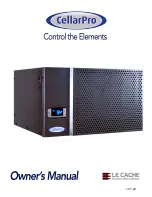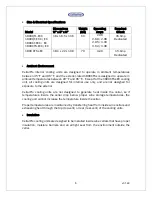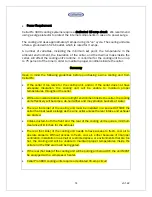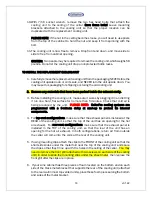
7
v3.1.22
Interior walls and floor
should have a minimum of
R-11 insulation, and a vapor
barrier on the warm side of
the insulation. The ceiling
should have a minimum of
R-19 insulation and a vapor
barrier on the warm side of
the insulation. Doors also
should be insulated and
tightly sealed with weather
stripping around the
perimeter of the door.
Surface-mounted fixtures
are recommended over
recessed lighting, which can
allow air to leak into the
cellar. Please note: The R-values above are the MINIMUM recommended amounts of
insulation. It is advisable to use as much insulation as possible inside your walls,
ceiling and floor. All walls, joints, doors and windows, electrical outlets and/or
switches, pipes, vents and light fixtures should be sealed to prevent ambient air and
moisture from infiltrating into the cellar.
If the cellar is not well sealed, the cooling unit will build up excess condensation that
eventually may damage the internal components and shorten the life of the cooling
unit, and may cause water to leak from the cooling unit.
We offer 2 Condensate Drain Line options for
cooling units that will be installed in wine cellars
(as opposed to wine cabinets.) The REAR drain
line configuration includes a fitting and
condensate tube at the rear of the cooling unit
for excess condensate to flow from the rear of
the unit
outside
the cellar. The BOTTOM drain
line configuration includes a custom hole, a
barbed fitting and a condensate tube at the
bottom of the cooling unit for excess condensate
to flow from the bottom of the unit
inside
the cellar.
Our REAR drain line comes with the fitting installed in the rear of the cooling unit. Our
BOTTOM drain line requires installation of the fitting. To install, apply pipe joint sealant
(included) to the male threads of the barbed fitting, then hand-tighten the fitting into
the threaded drain line hole. Do not force – if cross threaded, back out and realign.
Finish by tightening the fitting with a wrench.









































